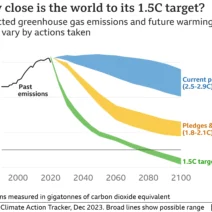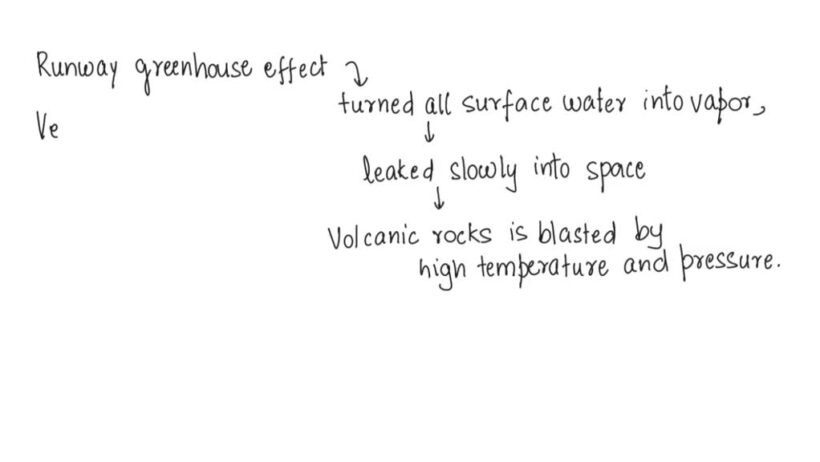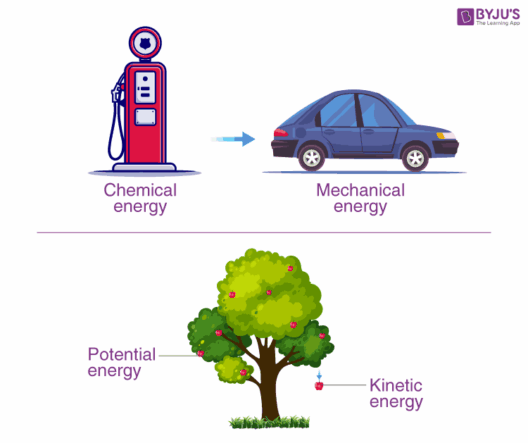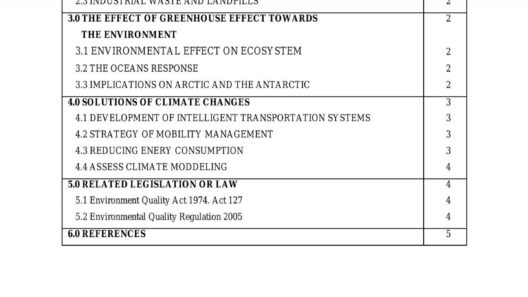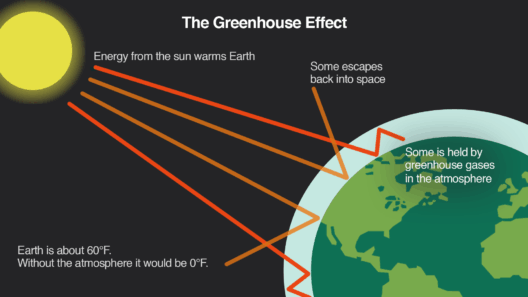Within the celestial ballet of our solar system, Venus and Earth have often drawn comparisons. They both share similar sizes, densities, and compositions, but a critical divergence sets them apart: the climate. While Earth celebrates its temperate zones and verdant landscapes, Venus endures a hellish inferno, the epitome of what is known as the runaway greenhouse effect. What peculiar alchemy led to Venus transforming from a potentially habitable world into a blistering and inhospitable orb? This exploration ventures into the depths of planetary climates and the catastrophic dynamics of the runaway greenhouse effect.
To establish a foundation, the greenhouse effect is a natural phenomenon wherein gases in a planet’s atmosphere trap heat from the sun, preventing it from fully escaping back into space. This effect is responsible for Earth’s moderate temperature, enabling life to flourish. However, on Venus, this mechanism has spiraled into a catastrophic feedback loop, exacerbating climate conditions to extremes unimaginable to us.
The Genesis of a Runaway Climate
Venus was not always the inhospitable world it is today. In its early history, the planet could have harbored oceans, similar to Earth’s vast bodies of water. The presence of liquid water suggests the possibility of a suitable environment for life. However, as tectonic activities may have driven volcanic eruptions at unprecedented scales, vast amounts of carbon dioxide and other greenhouse gases were released into the atmosphere. This is a starting point where Venusian history takes a catastrophic turn.
As this gaseous blanket thickened, the planet began to absorb more solar radiation, triggering an increase in surface temperatures. The crucial turning point occurred when surface temperatures escalated beyond 400 degrees Celsius (752 degrees Fahrenheit), a threshold that caused any seas to evaporate rapidly. This evaporative surge led to the release of more water vapor into the atmosphere—a potent greenhouse gas itself. With every increase in temperature, the atmosphere thickened even further, creating a vicious cycle.
The runaway greenhouse effect had taken root, enhancing the planet’s insulative properties. What began as a warming phase transcended into an unstoppable inferno. No longer could any mechanisms restore equilibrium; the scales tipped far beyond recovery.
The Alchemical Transformation of Atmosphere
As the once-promising conditions crumbled, the atmospheric composition of Venus metamorphosed dramatically. Carbon dioxide, now constituting some 96% of the atmosphere, overwhelmed the planet, with sulfuric acid clouds casting an impassable shroud around its surface. These clouds create a thick, hazy veil, reflecting sunlight while simultaneously trapping heat—a perplexing symphony of light and shadow.
This cacophony of gases demonstrates the chilling prowess of climate change instigated by the runaway greenhouse effect. The high pressure at the Venusian surface is roughly 92 times that of Earth, a pressure clothing the planet in a suffocating embrace. These conditions bear a grim omen for planetary atmospheres that might be altered by unchecked industrial emissions or other anthropogenic activities on Earth.
Lessons from the Inferno
Exploring the extremes of Venus provides an invaluable cautionary tale for Earth. The runaway greenhouse effect presents a stark warning against the reckless alterations to our planet’s atmosphere. As we accelerate toward a future where fossil fuels dominate, humanity must grasp the interconnectivity of its actions and the planet’s delicate balance. Without urgent changes to our consumption patterns and energy sources, we risk embarking on a path akin to Venus’s—that of irreversible change, where every action reverberates with dire consequences.
Indeed, Earth finds itself at a precarious edge. Global temperatures are rising, polar ice caps are vanishing, and weather patterns are fraying beyond recognition. The narrative we craft for our world must avoid the tragic metamorphosis seen on Venus. This calls for embracing alternative energy methods, fostering sustainability, and nurturing planetary stewardship to prevent our world from spiraling into similar extremes.
The Resilient Glow of Hope
Even amidst the profound ramifications illustrated by Venus’s fate, there exists a glimmer of hope. The insights gained from studying our celestial neighbor can transcend mere cautionary tales. They kindle discussions about climate resilience, renewable energy, and innovative technologies curated to curtail climate crises. The combative forces of climate change hinge on human response—our resolve and our ingenuity will dictate whether we stand resilient or succumb helplessly to the rising tide of destruction.
In the grand tapestry of the cosmos, each planet’s narrative intertwines with elements of myth and folklore. Yet, the tale of Venus captivates due to its stark realities and serves as a harbinger. A monument to what could transpire when temperatures spiral unchecked, its existence is an enduring reminder. We command the future of Earth, harnessing the lessons of missteps taken elsewhere. If we act decisively now, we may yet steer clear of delivering a terrestrial echo of Venus—a world overwhelmed by its own greenhouse consequence.

